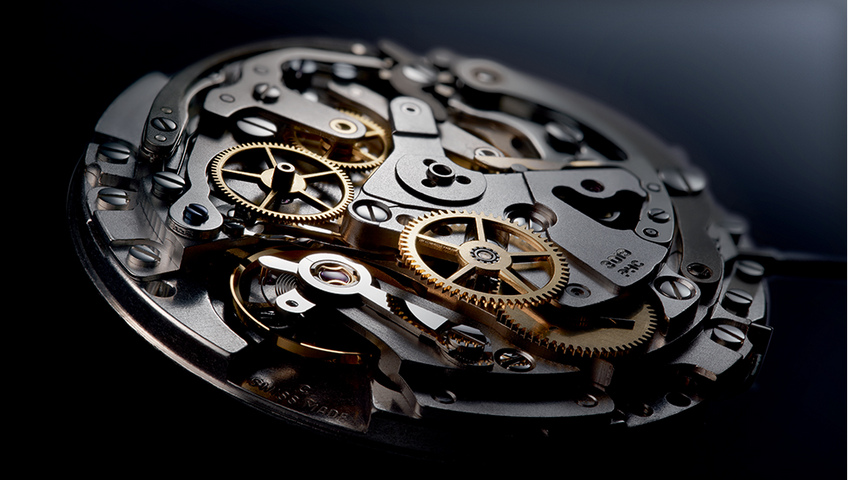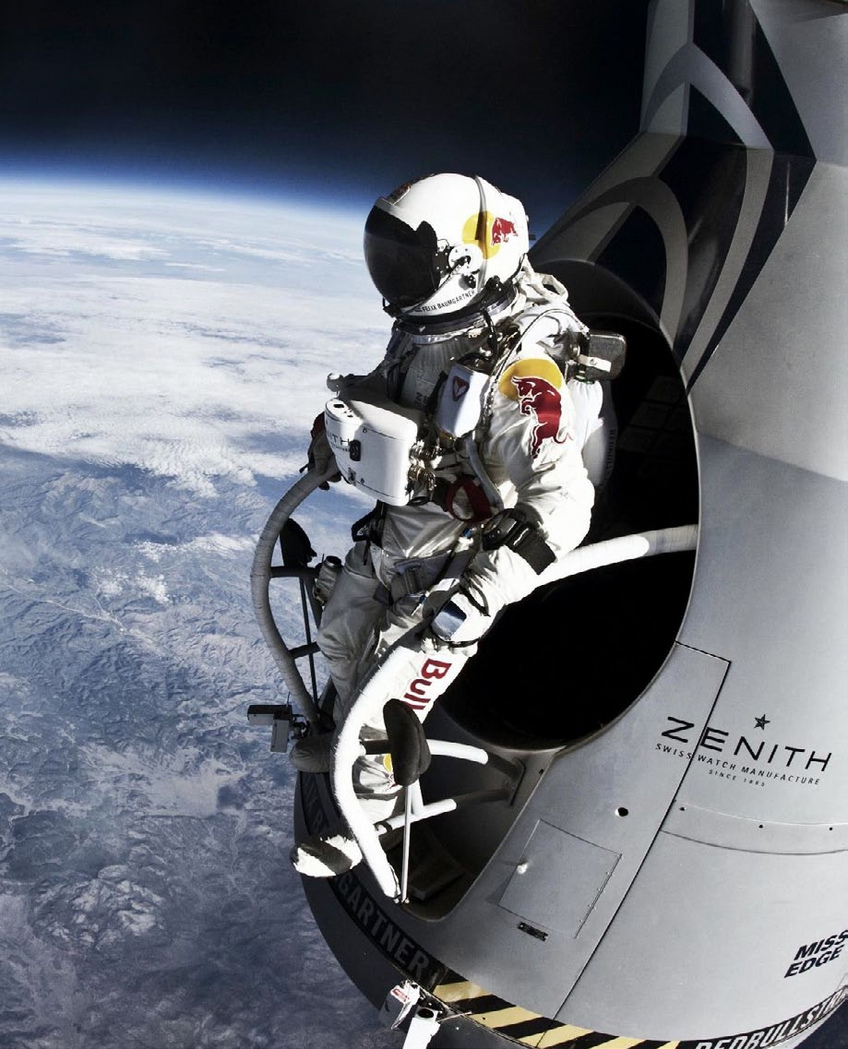

Jean-Frédéric Dufour: The Unbeatable King of High Beat
On the subject of high frequency Jean-Frédéric Dufour, the President of Zenith, has pride of place, since the El Primero is the undisputed ‘King’ of high frequency! With an enormous output of movements over its 44-year history, no one will attempt to contest its value.
First published on veryimportantwatches.com
Constantin Stikas: What do we gain with high frequency?
Jean-Frédéric Dufour: You know as well as I do that high frequency was invented at a specific juncture in time, due to the fact that watches were subjected to more and more movements and their slow balances were influenced by gravity to an unduly high extent. Those were balances with high inertia and one therefore had to use very powerful springs. When we downsized the case of the watches and, as a result, also the watch movements, switching from the pocket watch to the wristwatch, we had to find ways to compensate for this loss in accuracy, due to the decrease in the size of the balance, by increasing the frequency.
However, I do not believe that we can talk about high frequency and omit to mention the parameters of amplitude, etc. High frequency is important, but subject to certain conditions being met.
In response to your question regarding the El Primero, what we have gained is accuracy. The balance, by speeding up, divides time into smaller spans and, the smaller the spans, the less the watch is subjected to external influences, which are the result of physical forces, such as gravity, fluctuations in temperature etc.
CS: What is at risk with a high frequency watch?
JFD: What do we risk losing with high frequency? That’s a good question... Some people claim that we lose reliability, because there is more wear. At Zenith, it has been 44 years that we have been manufacturing the El Primero and I have never seen an El Primero with a worn escapement. Therefore, I believe that it is an invalid argument.
Evidently, we can lose a bit of power reserve, but today we have managed to have springs that compensate for this, thus the power reserve remains the same. So, I do not believe that we lose something.
But, take heed. I am only talking about 5Hz!... It is true that, when we are on the subject of very very high frequencies, there we lose out in many ways.
CS: You had told me in another interview that Zenith had also invented the 4Hz. Would you like to talk to us about this?
JFD: Zenith’s quest, during a historical juncture when watches had to be precise, in order to be recognised as reliable instruments, has led to our brand being awarded 2,333 chronometry prizes!... At the time, teams were conducting research into improving precision.
It was not me who talked about the invention of 4Hz by Zenith. It was Pierre Gygax, the current COO of Ulysse Nardin, who told me that his father, who at the time was a watchmaker specialising in chronometry at Zenith, had been talking to him about research that they had been conducting in order to move from 3Hz to 4Hz.
CS: For decades, the El Primero was the only movement in the world to have attained this performance. Why had the other brands not attempted to manufacture a movement operating at 5Hz and even Rolex was relying on the El Primero for its Daytona?
JFD: But, you know, manufacturing a chronograph is complicated. Today, with the information technology that we have at our disposal, we have managed to conceptualise a chronograph in two or three years, but then one must produce it industrially, make it reliable etc. It takes an enormous amount of time. The El Primero was there, it existed. It was reliable. Why should we not have used it? That is what one must ask oneself.

CS: Why do we see a plethora of Haute Horlogerie Houses presenting watches with high frequency movements today?
JFD: I think that perhaps it is an effect of fashion. On the contrary, this makes sense in terms of the spirit of TAG Heuer, since TAG Heuer is well-known for its sports stopwatches and in a sense high frequency permits one to divide time into smaller chunks, therefore when one wants to mechanically calculate the one hundredth and then the one thousandth of a second, it is amusing to talk about high frequencies.
In this case, the El Primero is suitable because it divides the second into ten; therefore it mechanically measures the one tenth of a second, a performance that is largely sufficient for a contemporary wristwatch.
CS: What is the difference between the El Primero and the 5, 8 or 10Hz that we have been seeing in recent years by other Haute Horlogerie Houses?
JFD: Legitimacy! Reliability! Credibility! History! The other houses have made 1000 pieces or even 300 pieces and we, we were supplying Rolex for 15 years, in addition to the movements that we have been manufacturing for 44 years for Zenith’s El Primero collection. What do retailers around the world tell their clients in order to sell the El Primero? They tell them that it is the best chronograph in the world! Therefore, it is not just me who says so. It is professionals all around the world!...
CS: What is the difference between the El Primero and the concept watches that have been beating the high frequency record with their 50, 500 or 1000Hz?
JFD: A concept watch represents a quasi-artistic performance. It is manufactured in a limited edition, or even in a ‘one shoot’ and therefore it is primarily conceptual, whereas the El Primero stands for over 50% of our turnover.
It is imprinted on our genes, it is something that we have been manufacturing every day for more than 4 decades!...
CS: There are people who have stated that the eye, the hand and the brain are incapable of following the hundredth or the thousandth of a second. What do you think about that?
JFD: It is true but, at the same time, when we are timing sporting events, the thousandth does indeed play a role a times in car races or in skiing competitions etc. since competition has intensified. At the time the difference between the first and the second, in a car race, was in the range of one minute. Today we often see differences in the range of hundredths or thousandths of a second.
CS: At Zenith, have you already considered conducting research on a movement that will be faster than the El Primero?
JFD: Yes. We even began it, but we discontinued it. We decided to focus on precision and I believe that in order to attain the greatest precision there is not only high frequency to consider. There are also the effects of gravity and other parameters. We therefore concentrated on all this, by making the Christophe Colomb.
CS: Félix Baumgartner beat a high speed record, which seemed to be beyond human capabilities, a Zenith on his wrist. Would you like to talk to us about this unique experience?
JFD: To us, this event represents something very important. First, it allowed us to do something that no other watch had ever done before, while at the same time it ensured us our inclusion in a very exclusive club of mythical watches associated with groundbreaking moments in the history of humanity. There is the watch that was on the Moon, the one that was at the greatest depth underwater and the one that was at the highest point on Earth and today there is our watch, which was on the wrist of the man who surpassed the sound barrier with his body!

CS: What is your personal relationship to speed?
JFD: This is always very pleasant, because it makes one’s adrenaline rise, regardless of whether one is skiing, sailing or on a motor-boat etc. By car it has unfortunately become increasingly difficult and dangerous. Therefore, one must be careful or do so on an organised race track. Speed is an exhilarating affair. Usain Bolt runs at a speed of 30 km/h, but I can’t. Therefore, if I manage to reach 300 km/h, it is something fascinating…
CS: Do you believe that a speed limit should be imposed on motorways and, if so, that it should be set at how many km/h?
JFD: With the increase in traffic, we are obligated to impose speed limits, because otherwise it would become too dangerous. At the time, when there were no cars on the streets, it was a different matter. But today one must impose stricter rules; otherwise the situation deteriorates into anarchy.




